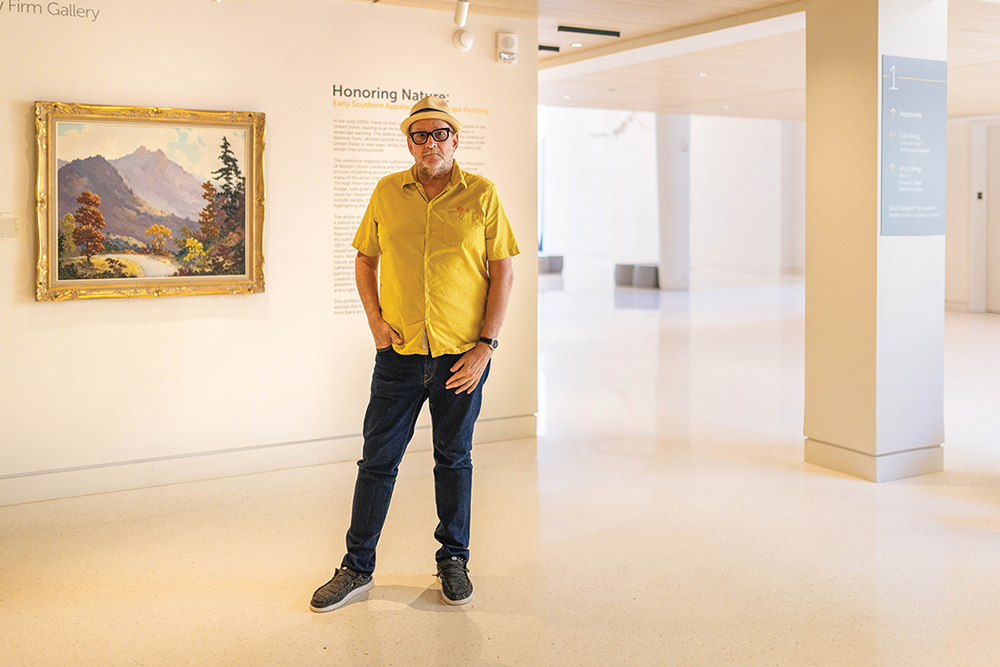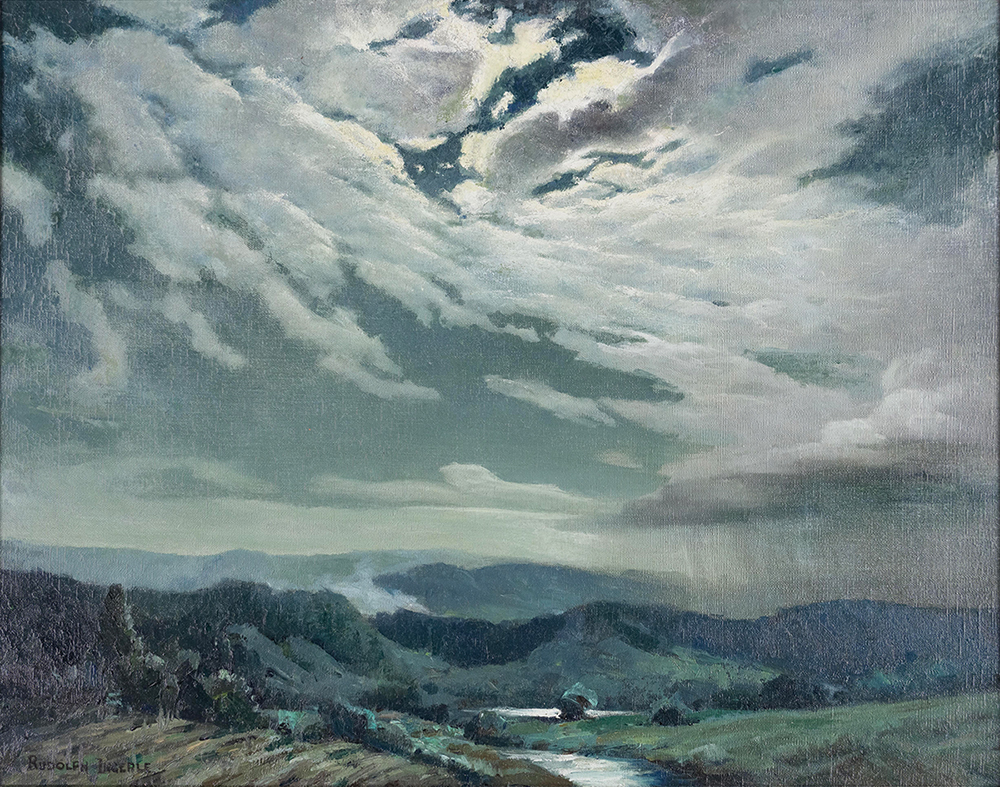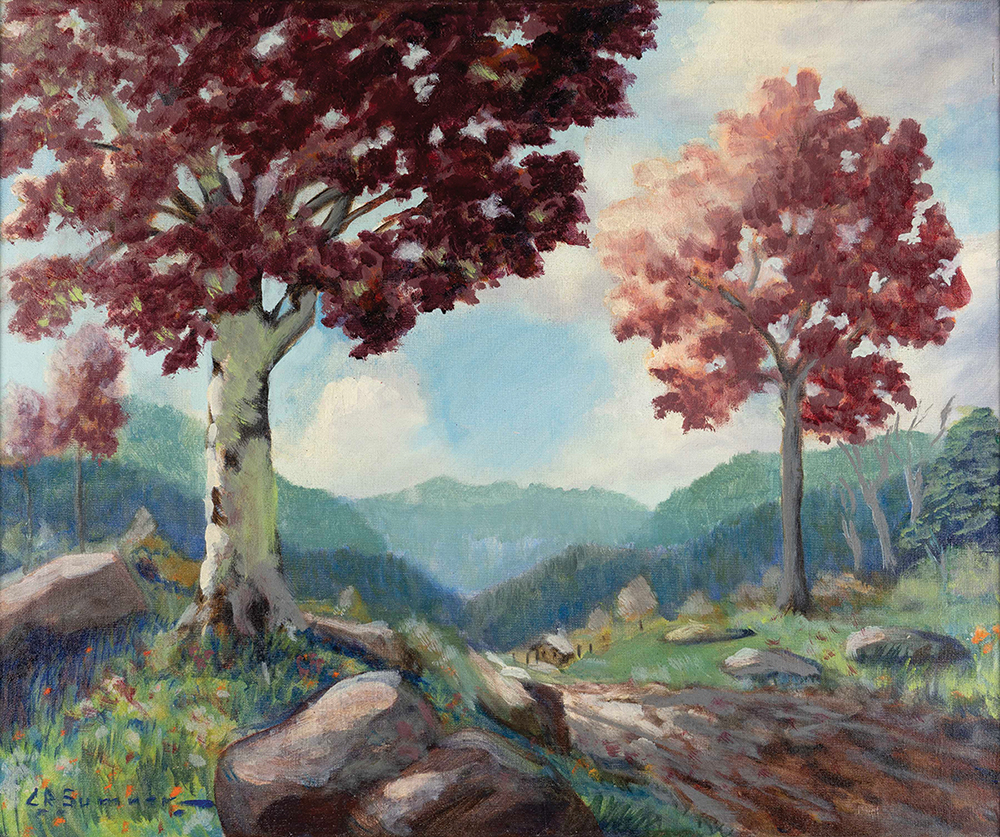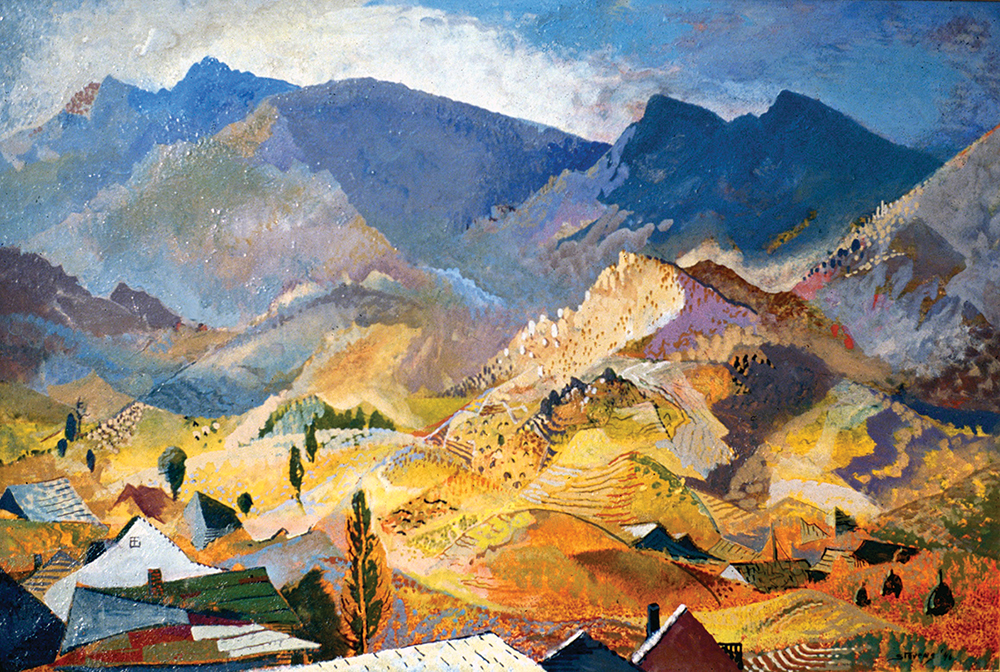How early-20th-century landscape painters saved the Smokies

Portrait by Rachel Pressley
Mist-shrouded vistas. Lush deciduous forests. Moonlit meadows. These are just some of the awe-inspiring scenes featured in Honoring Nature, a show of early Southern Appalachian landscape paintings running through mid-fall at Asheville Art Museum.
According to guest curator Andrew Glasgow, the exhibit is a “visual pleasure” designed to exude a “sense of freedom and release.” But beneath the veneer of verdant foliage is something deeper: rebellion.
“People don’t usually think of landscape painting as radical,” says Amelia Brown, the museum’s assistant curator. “But in the 1920s and 1930s, not only were landscape painters going against the prevailing abstract art movements, but many were taking up an environmental cause.”

As Brown explains, the Industrial Revolution heralded both progress and peril for the Great Smoky Mountains. With the advent of railways and roads, remote reaches were suddenly accessible to the outside world, ushering in an era of economic growth and cultural exchange. Yet this newfound connectivity came at a cost.
“The need for coal, wood, and gas led to an increase in clear-cutting and mining that destroyed natural landscapes and depleted resources,” says Brown.
The virgin forests between Asheville and Knoxville, Tennessee, were especially vulnerable. According to estimates from the National Park Service, more than 80 percent of the original forest cover in the Great Smoky Mountains region was logged during this time, with some areas experiencing nearly complete deforestation.
Desperate to save the landscape from utter devastation, “painters, poets, and writers from all over the country and the world flocked to the area to record its beauty,” says Brown.
Among them was Rudolph F. Ingerle. An Austrian immigrant, Ingerle studied at the School of the Art Institute of Chicago in the early 1900s and later joined a group of landscape painters known as the School of Painting in Brown County, Indiana. He also went on to help found the Society of Ozark Painters.
In the fall of 1926, Ingerle found himself craving fresh inspiration. And so, he boarded a railcar and traveled east to Bryson City. He proclaimed it “love at first sight.”
“The Smokies have one quality that is unique — charm,” he wrote in a Chicago arts publication. “The Smokies have enduring charm. Having seen them once, they lure you back again and again. I love them, and they just keep a callin’ ‘come back,’ and it makes me mighty lonesome for them.”

In the next decade, as the Great Smoky Mountains National Park came to fruition, Ingerle would return time after time, capturing rocky crags and roaring rivers in golden light. He was soon known as the “Painter of the Smokies.”
But other artists would come, too.
“Elizabeth White painted a beautiful nighttime scene of the mountains in Montreat, likely close to Lookout Mountain, which is still a popular hike just outside Asheville,” says Brown. “Leo Meissner’s pastels depict Sandy Mush, Calf Cove Valley, and Potterstown. Lawrence Mazzanovich’s autumn view of Chocolate Drop Mountain is clearly painted from a high point, overlooking a valley with the mountains in the distance.”
Stylistically, these creatives embraced realism, which was avant-garde in its own right.
“While most of the works in this exhibition rejected the non-representational approach to landscape painting, the time period between the 1920s and 1940s was a period in which the international aesthetic shifted toward abstraction,” explains Asheville artist Callie Ferraro.
In conjunction with Honoring Nature, Ferraro will host “Painting Places from Imagination,” a three-week-long class that adopts a more contemporary approach to landscape painting through the use of representational imagery, including participants’ own nature photography.

“This class walks you through the creative process of deconstructing a realistic image to reflect a time and place many have been to, but only you can find with your paintbrush and imagination,” says Ferraro.
The resulting canvases will likely look much different from those featured in the exhibit. But the underlying inspiration will remain unchanged.
As Ferraro explains, “… the natural beauty still found in the Great Smoky Mountains of Western North Carolina and Tennessee [is] the same reason many artists are drawn to this area today.”
Honoring Nature: Early Southern Appalachian Landscape Painting runs through Monday, Oct. 21, in The Van Winkle Law Firm Gallery at Asheville Art Museum (2 South Pack Square, ashevilleart.org). Callie Ferraro’s three-week class, “Painting Places from Imagination,” happens on Thursdays, July 18, 25, and Aug. 1, 6-8:30pm. Cost is $173. Members receive a 10-percent discount. Two full equity scholarships are also available for BIPOC participants.